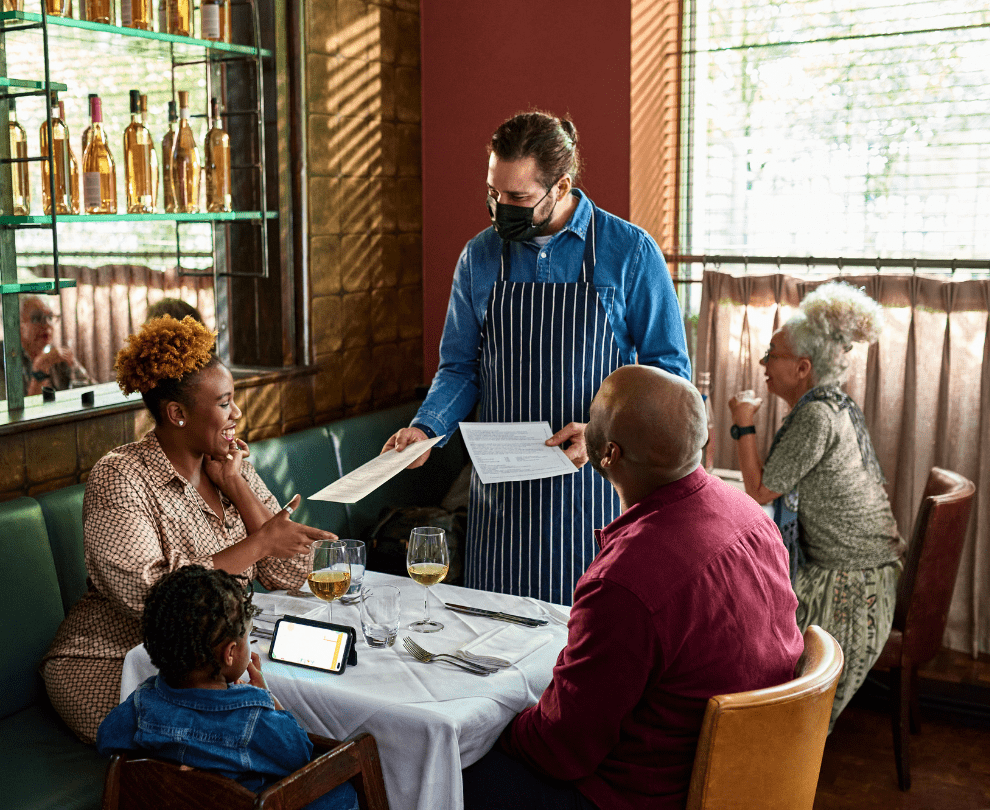Sign up for restaurant insights
Kevin Shin, the owner of King Wang’s in New York City, is a finance expert turned virtual restaurateur. He’s spent most of his career managing a 3.8 billion dollar family fund where he built financial models and executed those strategies for his clients. But when the pandemic hit, Kevin turned his attention to the restaurant industry.
“Friends of mine, who worked as chefs and restaurateurs, were losing their jobs and restaurants at alarming rates,” Kevin explained, “and I wanted to find a business model that could overcome the challenges of COVID-19 and tap into the increasing demand for delivery and takeout.”
Kevin dug into the numbers of the restaurant industry. He analyzed the various costs and pain points of owning a restaurant, such as restaurant operations, marketing, labor, and food waste.
As he dug into these pain points, he came across the virtual restaurant model. “I realized through a virtual restaurant I could build a restaurant concept, safely serve diners through takeout and delivery, and lower my overhead costs by utilizing ghost kitchen spaces throughout NYC.”
To test his virtual restaurant hypothesis, Kevin opened King Wangs. His menu, carefully crafted by a former Daniel Boulud chef, features classic sandwiches and sides influenced by Japan, Korea, and China.
One of King Wang’s most popular dishes is their Ramen Fries. King Wang’s takes its in-house-made ramen broth, dehydrates the broth, and then sprinkles it over the fries, creating an irresistible dish.
The results of Kevin’s virtual restaurant experiment: a cult sensation.
Kevin Shin built his virtual restaurant concept in order to capture delivery demand in his area
Kevin approached his virtual restaurant business model methodically and from a quantitative perspective. From his research, he knew that staffing costs could be a problem for restaurants. An optimized menu that is unique with minimal staff to execute was important to the financial model. To avoid food waste and protect his profit margin, Kevin and his executive chef ensured King Wang’s had a small menu that cross-utilized ingredients and was easy to execute.
In addition, Kevin designed his restaurant operations strategy around food delivery apps, like Grubhub. Since the existing infrastructure of food delivery apps existed, he wanted his food concept to tap into the benefits of food delivery apps.
“With Grubhub, there are millions of diners across America using the app.” Kevin explained, “As I opened King Wang’s, I knew I wanted to tap into Grubhub’s user base and tools to get instant exposure for my virtual restaurant and drive orders.”
“80% of our business came from Grubhub.”

Kevin Shin
Founder and CEO, King Wangs
Tapping into influencers to build a cult following
Kevin knew social media could help increase exposure for King Wangs so his next step in building his virtual restaurant was to turn his attention to his marketing strategy. He partnered with a local PR firm to learn the ins and outs of social media marketing. He also tested various paid social media tactics to increase King Wang’s reach and exposure on Instagram.
But the most successful social media tactic he found was through influencer marketing.
Kevin immersed himself in the New York food influencer scene on Instagram. He spent countless hours digging into the social media accounts of local food influencers and learned which ones had the most engaged followers.
“As you dig into Instagram, you’ll notice that most of these influencers work in pods.” Kevin explained, “and when you can identify that pod, you can tap into a whole new community of influencers.”
Kevin put his energy into networking with New York’s influencer scene. “I invited these influencers to try King Wang’s food for free,” Kevin explained. His marketing strategy worked.
Influencers and celebrity chefs like Judy Joo, host of Food Network’s Korean Food Made Simple, visited King Wangs and shared their experience with their following. These influencers created social media content that ranged from still photos to short video snippets eating King Wangs’ sandwiches, and then shared it on their own Instagram accounts.
Kevin saw his own social media following grow due to his influencer marketing strategy, resulting in more orders. In addition, this strategy also provided him ample content to share on his own social media channels where he tags these influencers.
“We see much higher views and engagement on the posts we reshare from influencers and tag them in,” Kevin explained.
Four things to consider when opening your virtual restaurant
Kevin believes the virtual restaurant model is only going to grow from here. “Virtual restaurants are the wave of the future,” he commented.
For other restauranteurs looking to tap into this emerging trend, he has a few pieces of advice.
Optimize your virtual restaurant menu by cross-utilizing ingredients
According to Kevin, one of the most common pain points for restaurants is staff costs and food waste. You can avoid food waste by designing a smaller, more optimized menu that features cross-utilized ingredients.
Make your restaurant operations as efficient as possible to keep costs down
Another costly pain point for restaurants is their operations strategy. Make sure you build your virtual restaurant business model with an optimized operations strategy from the get-go to avoid any costly impact on your bottom line. Think through your preparation strategy and train your staff on order fulfillment best practices.
Build your virtual restaurant concept for success on delivery apps like Grubhub
Kevin found success with King Wangs because he built his virtual restaurant concept knowing he wanted to tap into delivery apps like Grubhub. As you develop your virtual restaurant concept, consider how you will leverage a partnership with Grubhub to reach new customers and fulfill your orders.
Work on your social media game
According to MGH Marketing, 42% of U.S diners have interacted with restaurants on at least one social media platform. Of that group, 66% said they are more likely to visit or order food from the restaurant.
Building your social media following doesn’t need to be a headache. Kevin found success by networking with local food influencers and leveraging their user-generated content for his own social media channels and online menu.
What’s next for Kevin Shin and King Wangs
King Wangs is on a mini-hiatus as Kevin, and his team build a food truck for King Wangs and finalize franchising opportunities for his virtual concept. In the meantime, Kevin is keeping busy with his latest restaurant business venture: World Food Gallery, a food incubator with a mission to make unique dining experience restaurants accessible across the United States.
Interested in launching your own virtual restaurant?
Download Grubhub’s Virtual Restaurant Checklist to learn how!






